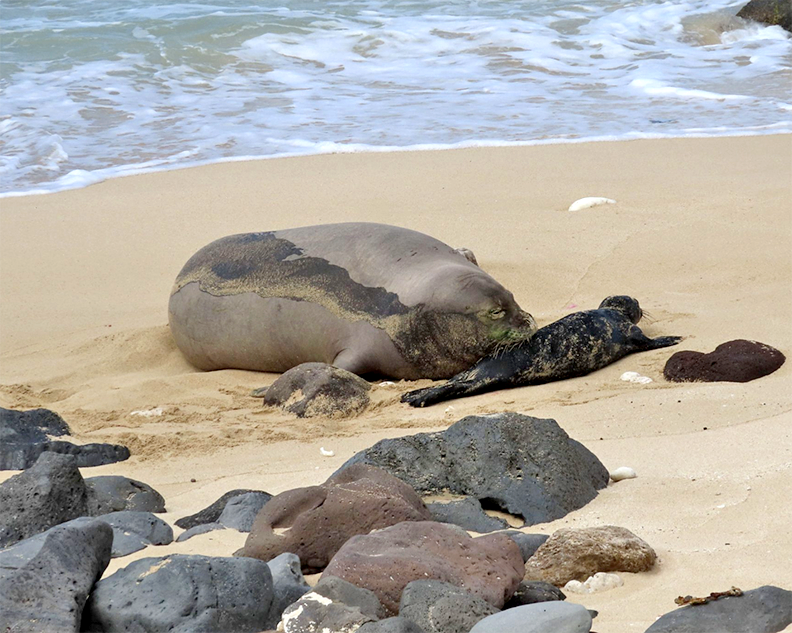By Jan TenBruggencate
There are a few plants that evoke the tropics, plain and simple.
The coconut, of course. And blossoms like the fragrant white Tahitian gardenia.
And breadfruit, the `ulu.
What a plant.
Set aside the fruit for a moment.
`Ulu bleeds white, a latex sap that was used for caulking canoes by the Polynesians. The sap could also be used as a glue.
The diluted sap, the juice from crushed flowers and crushed roots, the bark and other parts were used in Polynesia to treat a range of medical ailments.
Its light wood was used to carve fishing canoes and surfboards. It is a soft wood, easy to carve.
In some parts of the South Pacific, `ulu’s inner bark was pounded to make a variety of tapa cloth.
Its hairy leaves and flower sheaths were used as a fine sandpaper.
The dried male flowers can be burned like a mosquito punk to repel insects.
The `ulu, with its shiny green leaves, and their deep lobes shape, is a gorgeous tree. It seems to grow well in sandy soil and in deep valley earth, although it prefers well-drained soils. It can grow to be one of the biggest trees in the Hawaiian landscape.
And then there is the fruit. It is a fruit that so impressed early Europeans that the British brought it to the Caribbean. If you remember the story of the Mutiny on the Bounty, Captain Bligh’s mission on that voyage was to collect breadfruit saplings from Tahiti and deliver them to the West Indies. He failed on the 1787 trip, when his crew mutinied, but succeeded on a subsequent voyage.
He needed to collect saplings rather than seeds because one of the most prized forms of Tahitian breadfruit, like the Hawaiian breadfruit, does not produce seed. Its comparatively massive fruit is almost entirely fleshy and edible.
Young breadfruit are boiled or steamed and can be eaten as a salad item, very like artichoke hearts. Older breadfruit can be baked and eaten like potatoes. They can be cut up and fried, either like hashed browns or potato chips. Or mashed and mixed into casseroles. Or used in any number of other ways.
And while individual breadfruits produce fruit seasonally, there are many varieties that flower and fruit at different times, so it is technically possible to have breadfruit year-round if you’re in tropical or subtropical climates.
And some varieties do have edible seeds. They can be seeds as big as chestnuts.
The world’s largest collection of breadfruit varieties has been assembled by Diane Ragone of the National Tropical Botanical Garden. She has well north of 100 varieites, most of them growing at the garden’s Kahanu Garden on Maui, but some also at the McBryde Garden on Kaua`i.
Breadfruit are among the canoe plants — the plants that Polynesian voyagers brought with them to nearly every island they populated. And it makes perfect sense. Ragone is now trying to reintroduce them to the world as an answer to hunger.
- Jan TenBruggencate is a Kaua‘i based writer and communications consultant.
Discover more from ForKauaiOnline
Subscribe to get the latest posts sent to your email.





Leave a Reply